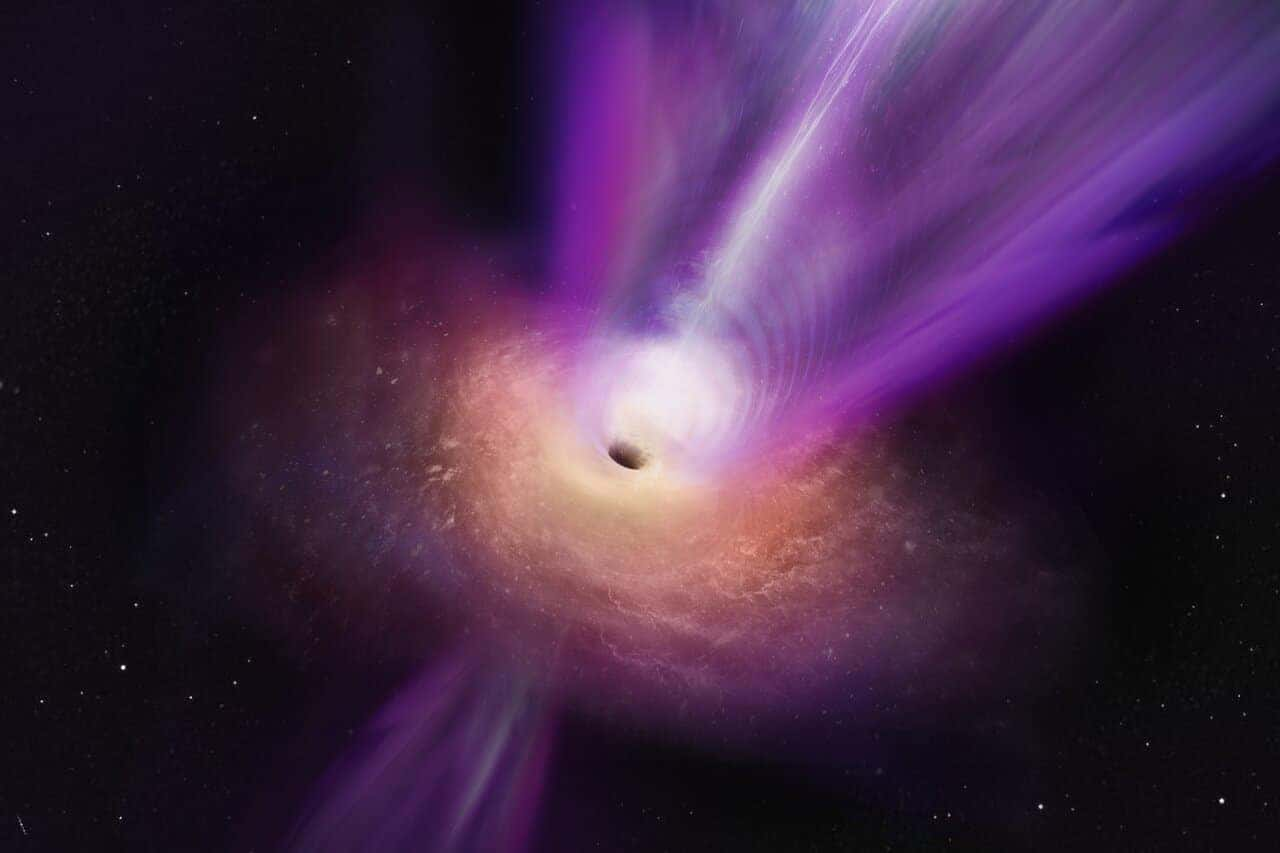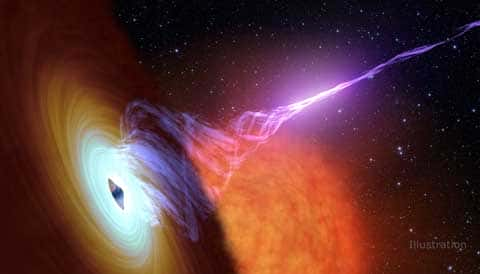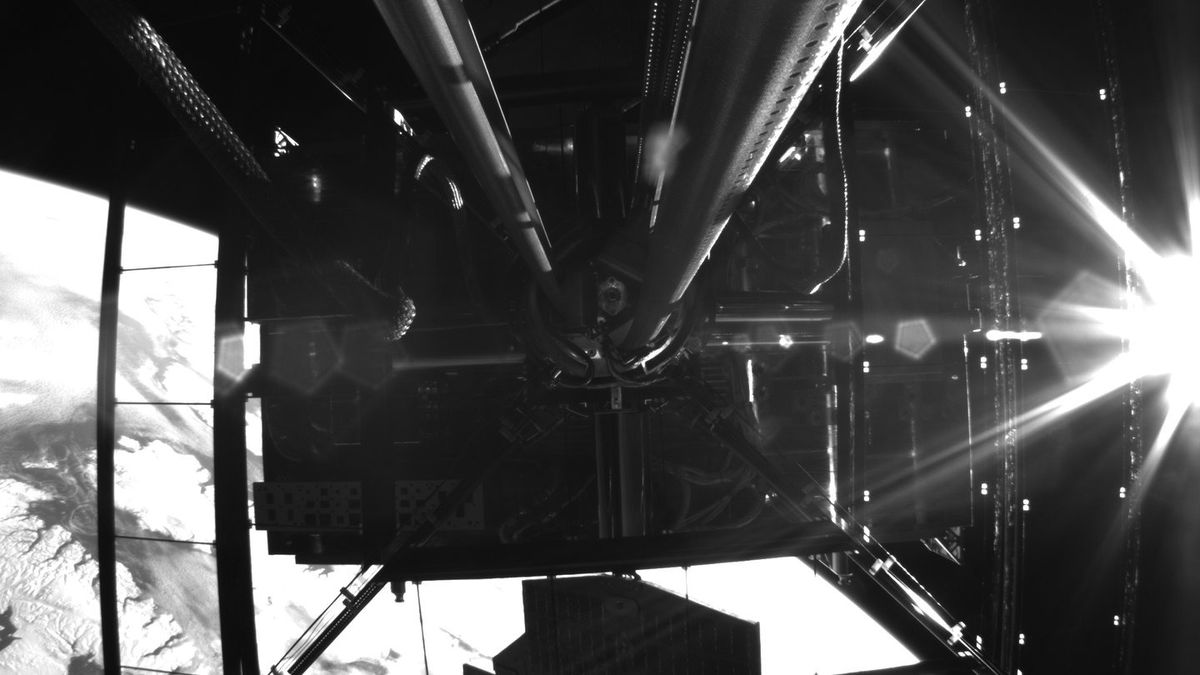A small black hole chowing down on gas and dust has shot off a jet of highly magnetic plasma, and astronomers have seen some strange changes in it.

Mysterious blinking object made up of an ordinary star orbiting a stellar black hole
As posted in SPACE, the Chinese Five-hundred-meter Aperture Spherical Radio Telescope (FAST) has identified the feature as periodic variations in the jet that happen in a split second.
The mysterious blinking object, designated GRS 1915+105, is known to be made up of an ordinary star orbiting a stellar black hole, a black hole that emerged following the death of a huge star. Some of the star’s material enters the black hole as it orbits it, but it cannot completely consume it. Instead, some of the material is accelerated into the jet that appears to shoot from the black hole’s poles.
The group responsible for the observation theorizes that the observed variations in the energy of the jet could be caused by the black hole’s rotation not being in line with its accretion disk, the disk of orbiting matter it is consuming. The jet may be wobbling as a result, almost like a celestial spinning top. The jet loses energy when it points away. It returns to normal a split second later as the system rotates back.
Leading researcher Wei Wang, a professor of astrophysics at Wuhan University in China, stated that the strange signal has an approximate period of 0.2 seconds and a frequency of about 5 Hertz. Such a signal is not constantly present and only manifests under particular physical circumstances. The signal was twice successfully captured by their team in January 2021 and June 2022, respectively.
READ ALSO: NASA’s spacecraft photographs Jupiter’s green glowing dot
Microquasars or quasars are GRS 1915+105
Microquasars, or quasars that are smaller than stars, are what scholars refer to as GRS 1915+105. Supermassive black holes, or quasars, are incredibly brilliant galactic centers that are millions or perhaps billions of times more massive than the sun.
These cosmic titans exert a powerful gravitational pull that attracts nearby stuff. Some of this mass drifts past the event horizon of the black hole, the boundary beyond which no light can escape. However, some material avoids this fate and is instead directed toward the black hole’s poles, where it emerges into space as the extremely intense jets. Microquasars also experience this, albeit on a much smaller scale.
Tech Explorist reported that changes seen in GRS 1915+105, formally known as quasi-periodic oscillations (QPO), have never before been observed in radio waves from a black hole of this type. This study of this evolving microquasar, located around 28,000 light-years from Earth in the direction of the constellation Aquila, could provide insight into the feeding patterns of smaller black holes since QPOs are valuable for understanding the physics of black holes and their surrounding systems.
This QPO, detected in radio waves, may be the first indication of alterations in jets of this kind, but the exact reason for these oscillations is still unknown.
A discrepancy between the black hole’s spin axis and the disk of hot, brilliant gas and dust surrounding it may be to blame for this phenomenon. This would occur from the stellar mass black hole’s ability to drag the very fabric of spacetime around with it as it rotates, an effect known as Lense-Thirring or simply frame-dragging.
READ ALSO: A former intelligence source claims that the US government has ‘intact’ spaceships




